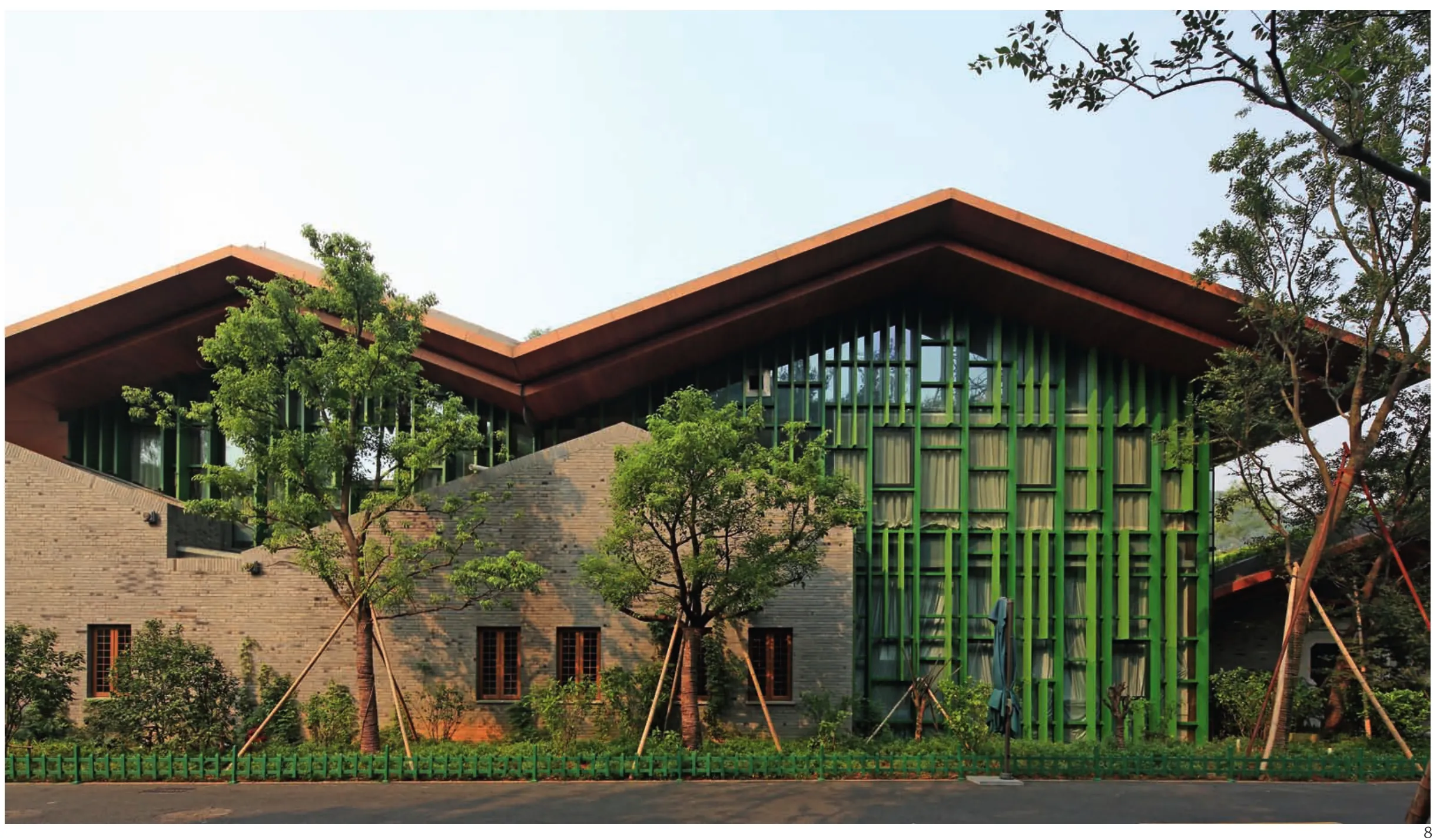杭帮菜博物馆,杭州,浙江,中国
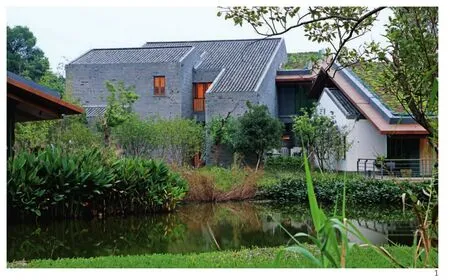
杭帮菜博物馆的用地位于江洋畈生态公园内,场地北、东、西三面环山,中间地势平坦,为西湖疏浚淤泥库区。经过将近10年的表层自然干化,形成以垂柳和湿生植物为主的次生湿地。
博物馆建筑群由西向东分为贵宾楼、餐饮区、博物馆经营区和固定展区这4个功能组群,各功能组群之间以木栈道和休息木平台等连接成整体。这些景观的构成元素是整个公园木栈道系统的有机组成部分,可供游客休息、观景之用,在长长的屋顶挑檐下,也将室内活动的空间延伸到室外水边和公园之中。
基于尊重自然的立场,建筑以折板屋顶形式削弱体量,以虚实体量穿插形成聚落感,以绿色遮阳立面格栅和植草屋顶使建筑真正融入湿地环境之中。杭州建筑的地域性特点是“秀、雅”,我们希望用现代的建筑材料和技术手段也能传递建筑的这种神韵,使之成为现代的杭州建筑。□
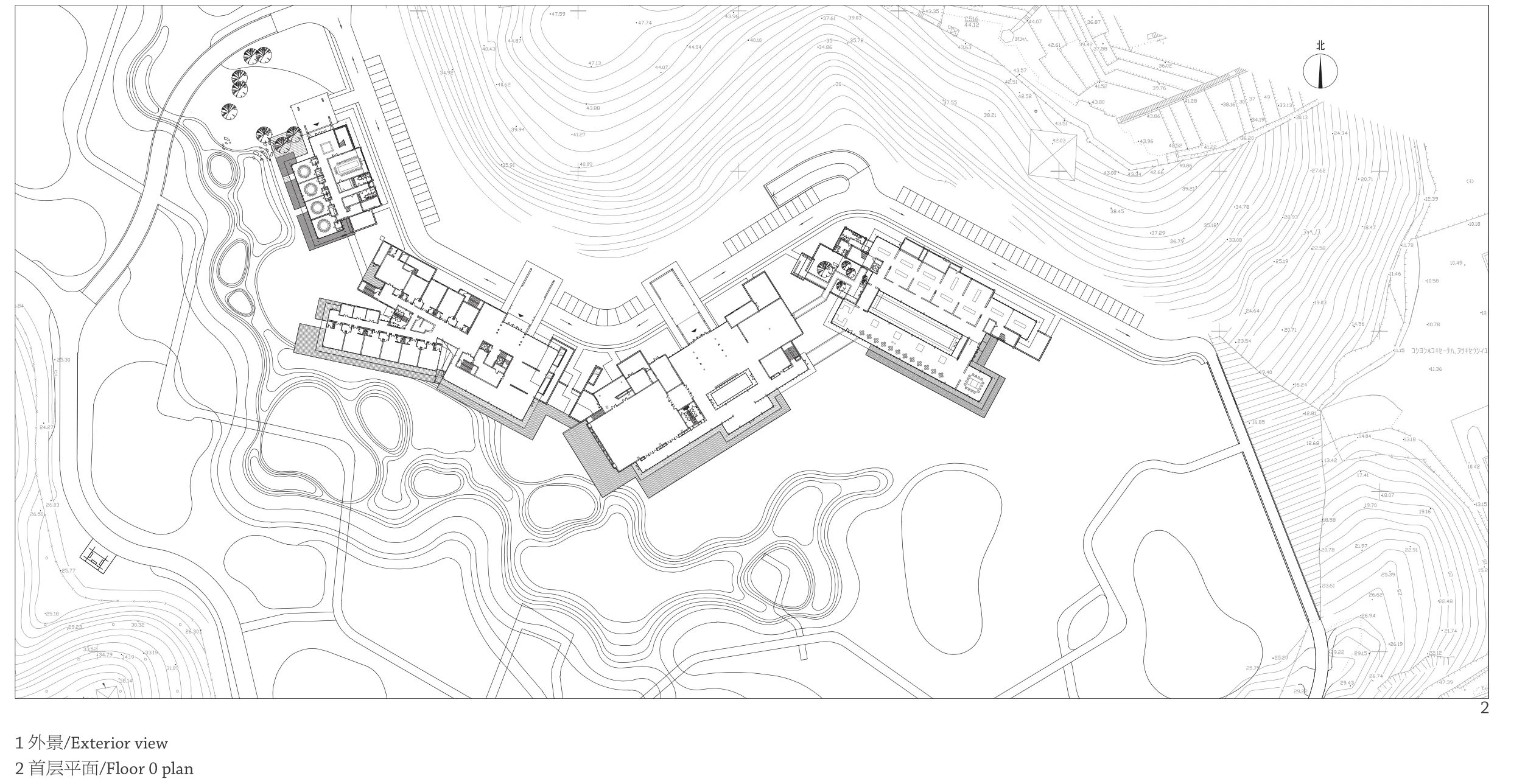
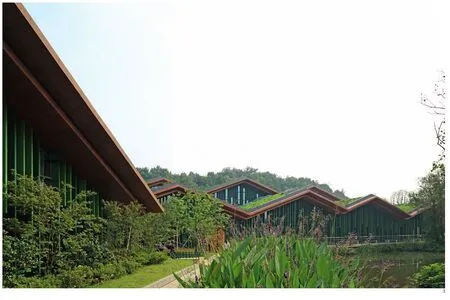
评论
王竹:基地坐落在山-水-湿地之中,呈现出破碎地形。建筑的多个组团随山势和水脉蜿蜒辗转,在转折处自然断开。断开的意义不仅是将较大的建筑体量进行拆分与切碎,更在于使北面的山体脉络穿过建筑群落导向南面的水塘围堰。层次丰富的屋顶,嵌入的灰砖粉墙体块,以及斑驳稀落的草顶,更彰显了空间的有机与时间的沧桑,让建筑自身成为了一个聚落。设计者对建筑的诠释与基地特质取得了一致,精准地将“建筑单元”与“地理单元”融合为一体,创造出卓越的新江南聚落景观——我把这种创作的策略与手段称作为“种房子”。折线形的建筑布局形成了与环境间最长的界面,人们在参观浏览与品尝美味之时,能够最充分地观赏到自然美景,真正实现了秀色可餐。地区建筑的营建正是从对“地域基因”的认知开始,最终产生其“地方语言”,达到“再造本土”的目标。
项目信息/Credits and Data
方案设计/Schematic Design:中国建筑设计研究院(崔愷,吴朝辉,周旭梁)/ China Architecture Design &Research Group (CUI Kai, WU Chaohui, ZHOU Xuliang)
工程设计/Construction Drawings:中国建筑设计研究院,浙江大学建筑设计研究院/ China Architecture Design & Research Group, Architectural Design & Research Institute of Zhejiang University
建筑师/Architects:崔愷,周旭梁,王薇,杨易栋/ CUI Kai, ZHOU Xuliang, WANG Wei, YANG Yidong
建设地点/Location:杭州市江洋畈生态公园内/ Hangzhou Jiangyangfan Ecological Park
总建筑面积/Total Floor Area:12470m2
建筑高度/Building Height:12m(屋脊/Ridge)
结构类型/Structure:钢筋混凝土框架结构(地下层),
钢结构(地上层)/ Reinforced concrete frame structure for underground floors, steel structure for aboveground floors
外立面材料/Materials for Facade:玻璃幕墙,面砖,涂料/Glass curtain wall, facing tile, paint
设计时间/Design Period:2010.05
建成时间/Completion:2012.03
摄影/Photos:张广源/ZHANG Guangyuan
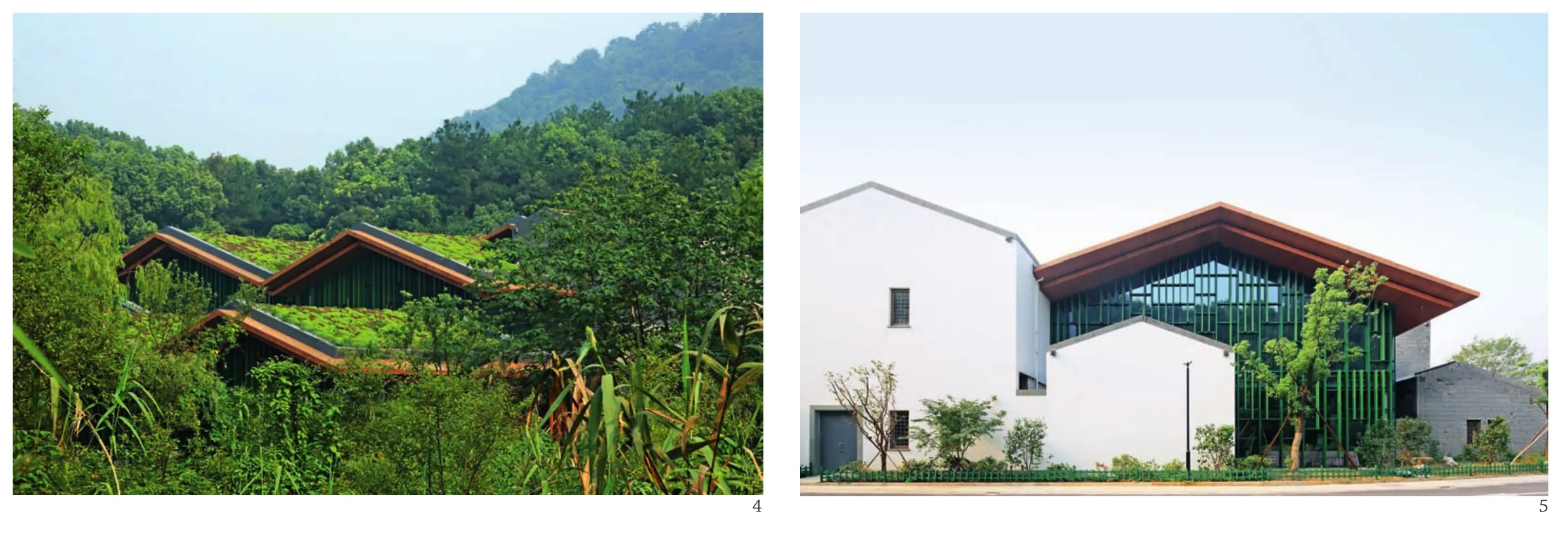

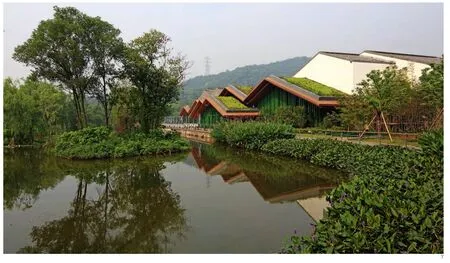
4 屋顶/Roof
5 外景/Exterior view
6 剖面/Section
7、8 外景/Exterior view
The Hangzhou Cuisine Museum is located in Hangzhou's Jiangyangfan Ecological Park. The park is surrounded by mountains to the north, east and west but is itself flat-an area used as a reservoir for dredging from West Lake. After almost ten years of drying, the surface layer has formed a secondary wetland of weeping willows and hygrophytes.
The museum is made up of a collection of buildings-four different functional areas from west to east, including a VIP building and dining,business and exhibition areas-connected by wooden trestles and viewing spots. These wooden elements continue the wood trestle system of the park and provide visitors with moments of pause.Indoor activities extend into the outdoors-to the waterfront and park-under the cover of long roofs. These plate-folded roofs articulate spaces for gathering and work with the rhythms of the landscape beyond. Green-planted-roofs and brisesoleil further soften the buildings' edges on this wetland site. Buildings in Hangzhou are known for possessing "xiu" and "ya" (beauty and elegance). The museum aims to communicate these characteristics through its materials and detailing, to demonstrate the contemporary "xiu" and "ya" of Hangzhou building.□
Comments
WANG Zhu: The site is located amongst mountains,waters and wetlands. The museum complex meanders in step with the topography, breaking into separate discrete volumes with each folding of the land. The gaps between these buildings allow for two landscapes-the mountains to the north and the water to the south-to connect across the site. Undulating planted roofs and blocks of white painted and grey brick walls
not only highlight the building's organic connection to site and the passage of time, they also show how the project has defined an environment. Working with the characteristics of the site, the designer has integrated the "building unit" and "geographical unit." He has created an excellent Jiangnan landscape settlement, a creative strategy I will call "zhong fang zi" (growing a house). The zigzag layout of the buildings accentuates the museum's interface with the environment around it-the better for people to fully enjoy and be fed by the best kind of "eye candy," the natural beauty of the surrounding scenery, when they visit. The construction of this "local" building began with the discovery of an all-important local gene, and eventually produced its local language, achieving the goal of reconstruction of local building.
